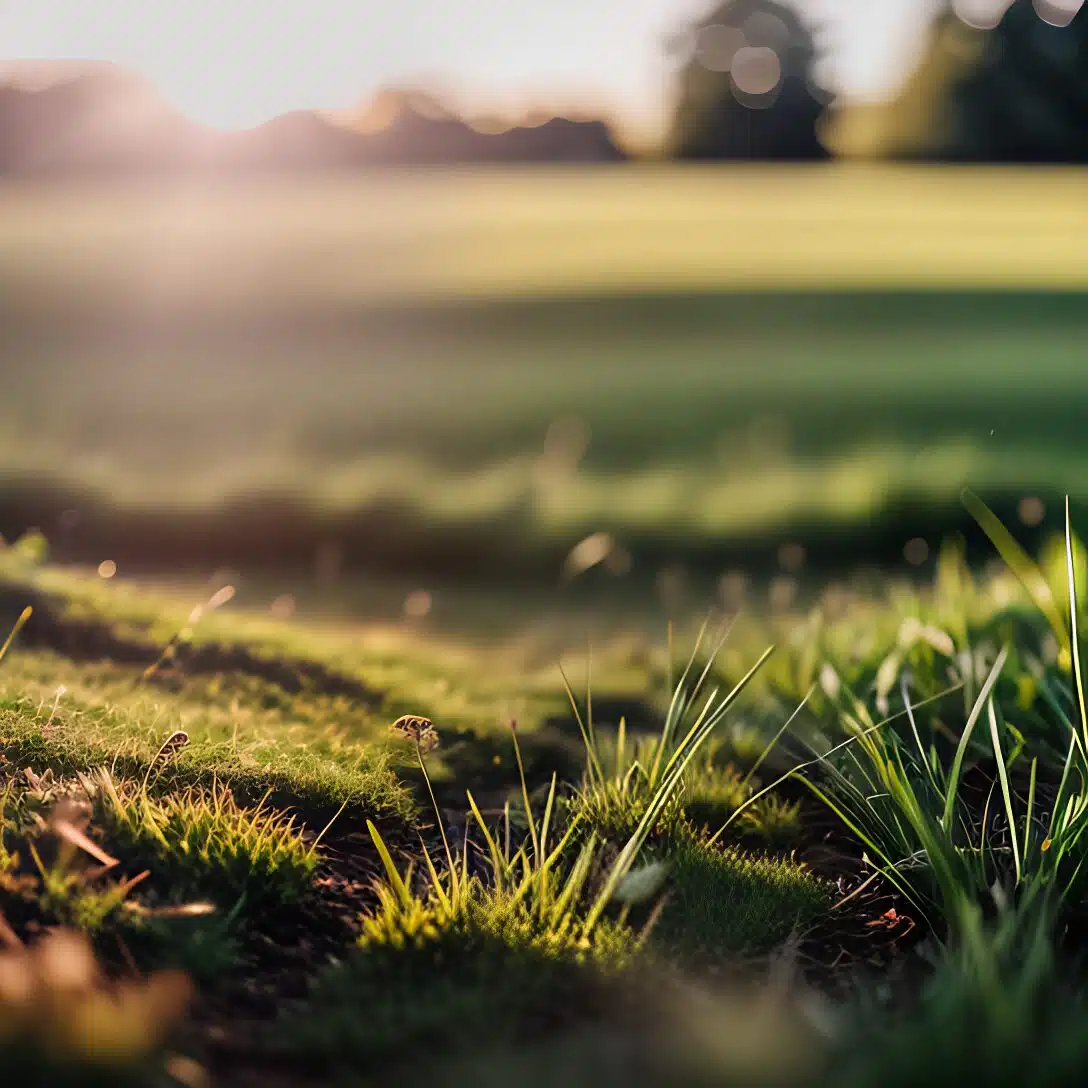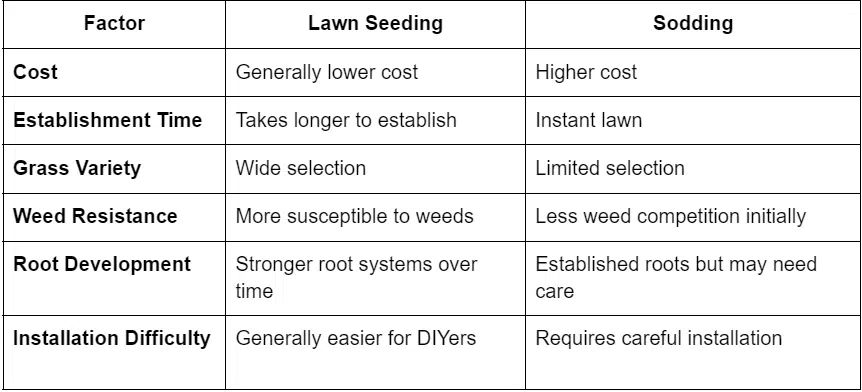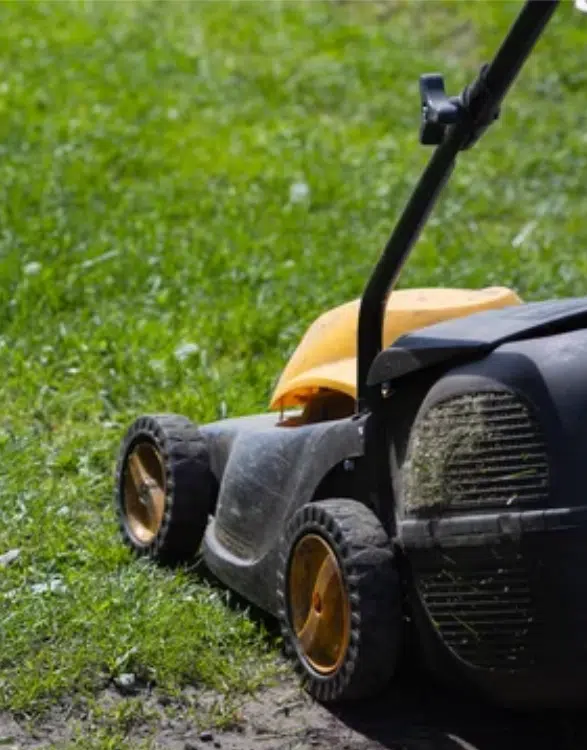When it comes to establishing a lush, green lawn in Cave Creek, Arizona, homeowners often find themselves weighing the benefits and drawbacks of two popular methods: lawn seeding and sodding. Each approach has unique advantages, challenges, and suitability depending on various factors.
This article aims to provide a detailed comparison of lawn seeding and sodding, helping you make an informed decision for your outdoor space.
Let’s get started!
Understanding Lawn Seeding and Sodding
What is Lawn Seeding?
Lawn seeding consists of spreading grass seed over the soil to create a new lawn or repair bare areas. This approach offers a broad selection of grass types and is usually more cost-effective than sodding. Seed lawns can flourish and develop robust root systems with proper care.
How about Sodding?
Sodding, on the other hand, entails laying pre-grown grass rolls (sod) directly onto the soil. This method provides an instant green lawn, which can be particularly appealing for homeowners who want immediate results. However, sod can be more expensive and requires careful installation to ensure proper rooting.

Pros and Cons of Lawn Seeding
Pros
Cost-Effective
Seeding is generally less expensive than sodding, making it a popular choice for budget-conscious homeowners. The lower initial cost allows you to allocate funds for other landscaping needs, such as soil preparation and maintenance.
Additionally, while seeding may take longer to establish, the overall savings can be significant, especially for larger areas.
Variety of Options
Seeding allows you to choose from a wide range of grass varieties, enabling you to select the best type for your specific location and climate. Different grass types can thrive in varying sunlight, moisture, and temperature conditions, ensuring you can find the perfect match for your yard.
This variety not only enhances the aesthetic appeal of your lawn but also contributes to its long-term health and resilience.
Stronger Root Systems
Grass grown from seed typically develops deeper root systems, leading to a more resilient lawn. Stronger roots allow the grass to access water and nutrients more effectively, resulting in a healthier and drought-resistant lawn.
As the root systems mature, they also help stabilize the soil, reducing the risk of erosion and improving the overall durability of your lawn.
Customizable
With seeding, you can mix different types of seeds, creating a lawn tailored to your preferences and needs. This customization lets you combine varieties that complement each other in color, texture, and growth habits.
Mixing seeds can enhance your lawn’s resilience by providing better adaptability to changing weather conditions and pest pressures.
Cons
Longer Establishment Time
Seeding takes longer to establish an entire lawn, often requiring several weeks or even months before you can enjoy a thick carpet of grass. Consistent care is essential to ensure the seeds germinate correctly and grow into healthy grass.
Homeowners must be patient and prepared for a gradual transformation, as the lawn will go through various growth stages before reaching its full potential.
Susceptibility to Weeds
Newly seeded lawns can be vulnerable to weed invasion, primarily if improperly maintained. Weeds compete with young grass for vital resources such as nutrients, sunlight, and water, potentially hindering the growth of your desired lawn.
To mitigate this risk, regular maintenance, including watering and applying mulch or pre-emergent herbicides, is crucial in the early stages to create an environment where grass can thrive.
Weather Dependence
Extreme heat or heavy rain can significantly affect how well seeds germinate. Excessive rain can wash away seeds or lead to fungal diseases, while prolonged heat can dry out soil and hinder germination.
For optimal results, homeowners should monitor weather patterns and plan seeding during favorable conditions, ensuring they can provide adequate care and adjustments.
Design
Installation
Advantages and Disadvantages of Sodding
Advantages
Instant Gratification
Sodding provides an immediate green lawn, allowing homeowners to enjoy their outdoor space right away. This instant transformation can enhance the overall aesthetic of your property, making it an attractive option for those looking to improve their curb appeal quickly.
Homeowners can host outdoor gatherings or relax on their new lawn almost immediately, eliminating the long waiting period associated with seeding.
Less Weeding
Since sod is already established, there is typically less competition from weeds initially. The dense, mature grass in sod forms a protective layer, making it harder for weeds to take hold and flourish.
This advantage allows homeowners to spend less time on weeding and maintenance in the early stages, enabling them to focus on other landscaping projects or enjoy their lawns.
Established Root System
Sod comes with a pre-developed root system, which can reduce the risk of erosion and promote quicker establishment. This established root network helps the grass absorb water and nutrients more efficiently, leading to a healthier lawn that can better withstand environmental stresses.
Furthermore, the robust roots can anchor the sod securely, minimizing movement and ensuring a stable foundation for your new lawn.
Disadvantages
Higher Costs
Sodding can be significantly more expensive than seeding due to labor and material costs. The price of sod includes not only the grass itself but also the labor involved in harvesting, transporting, and installing it.
This higher upfront investment may require careful consideration for homeowners on a budget, especially when determining ongoing maintenance costs.
Limited Grass Selection
When sodding, your choice of grass types may be limited to what is available in your area. Local suppliers may only offer specific varieties that thrive in the regional climate, which might need to align with your personal preferences or the particular conditions of your yard.
This limitation can affect the aesthetic appeal and overall performance of your lawn, making it essential to research and choose wisely before committing to sod.
Installation Challenges
Proper installation is crucial for sod to ensure optimal growth and longevity. Poorly laid sod can result in uneven growth, air pockets, and even grass die-off, leading to an unsightly lawn.
Hiring experienced professionals or following best practices during installation, such as ensuring proper soil preparation and watering, is essential to avoid these issues.
Climate Considerations in Cave Creek
Cave Creek experiences a desert climate with hot summers and mild winters. This environment influences the choice of grass types and the success of both seeding and sodding.
Best Grass Types for Cave Creek
For optimal results, consider these grass varieties:
- Bermudagrass: Ideal for warm climates, Bermudagrass is drought-resistant and thrives in full sun, making it a top choice for Cave Creek.
- Zoysiagrass: This hardy grass type tolerates heat and drought, establishing well from seed and sod alike.
- Buffalograss: A native grass that requires less water, buffalograss is perfect for homeowners looking for a low-maintenance lawn.
Understanding Cave Creek’s climate and soil conditions will help you choose the best method and grass type for your lawn.


Factors to Consider When Choosing a Landscaper in Cave Creek, AZ
Selecting the right landscaper for your lawn seeding or sodding project is crucial for achieving the best results. Here are some factors to consider:
Experience and Expertise
Look for landscapers with a proven track record in lawn installation and maintenance. Membership in organizations like the Cave Creek Chamber of Commerce can indicate a commitment to quality and community involvement. They should also be knowledgeable about local climate conditions and grass types.
References and Reviews
Ask for references or check online reviews from previous clients to gauge the landscaper’s reputation. A reputable landscaper should have a history of positive feedback and satisfied customers, demonstrating their ability to deliver quality work.
Reviewing testimonials and speaking directly with past clients can gain valuable insights into the landscaper’s professionalism, reliability, and overall performance.
Licensing and Insurance
Verify that the landscaper is licensed and insured to safeguard yourself from potential liabilities during the project. A valid license shows that the landscaper complies with local regulations and industry standards, while insurance offers protection in case of accidents or damages on your property.
Hiring a licensed and insured landscaper provides peace of mind and signifies their commitment to professionalism and safety.
Pricing and Estimates
Obtain multiple quotes from different landscapers to compare pricing and services offered. Ensure the estimates are thorough and transparent, addressing all project elements, such as labor, materials, and any extra fees.
This comprehensive approach allows you to make informed decisions based on your budget and the value each landscaper provides, helping you avoid unexpected costs.
Services Offered
Choose a landscaper who provides various services. Look for lawn care, fertilization, and weed control to keep your lawn healthy after installation. A comprehensive service package meets all your landscaping needs and creates a cohesive, well-maintained outdoor space.
Choosing a landscaper with various services can make maintenance more accessible, helping your lawn stay healthy all year round.
Communication
Effective communication is essential when working with a landscaper to ensure a successful project. A good landscaper should be responsive to your questions and concerns throughout the process, providing updates and addressing any issues.
Clear communication fosters a collaborative relationship, allowing you to express your vision while receiving expert guidance, ultimately leading to a more satisfying outcome.
Get Expert Help for Your Lawn Seeding in Cave Creek
Choosing between lawn seeding and sodding in Cave Creek depends on your budget, timeline, and lawn preferences. Seeding is cost-effective and offers a variety of grass types, while sodding provides quick results and less initial weed competition.
Consider your needs and consult with experienced landscapers like Green Valley Hardscapes to achieve a healthy, attractive lawn. Our team is ready to guide you in transforming your outdoor space—contact us today to get started!

